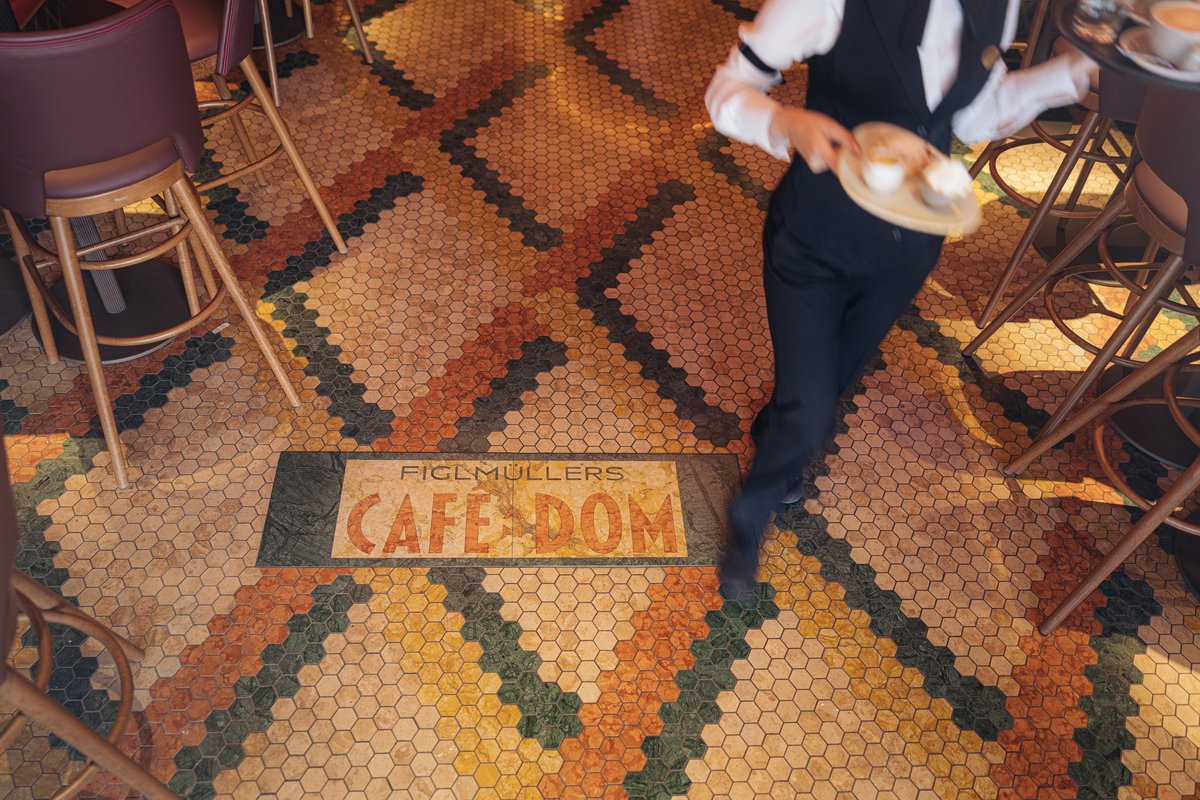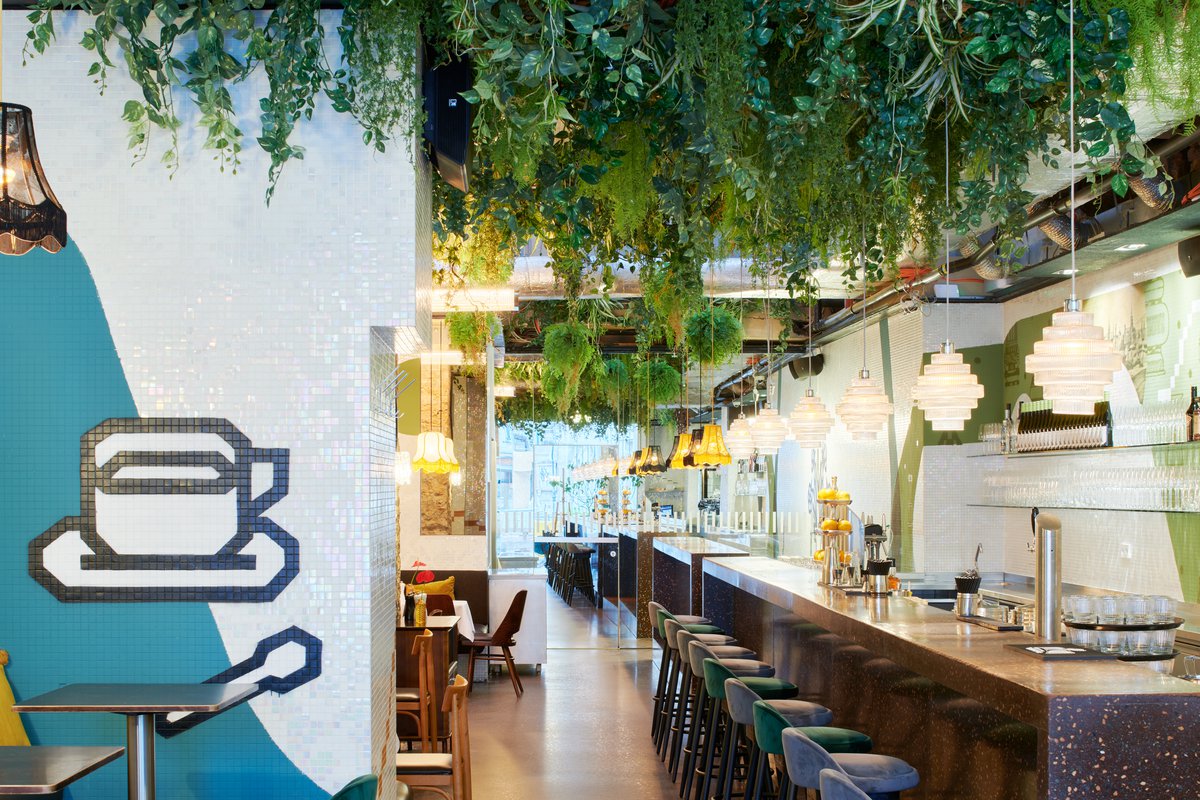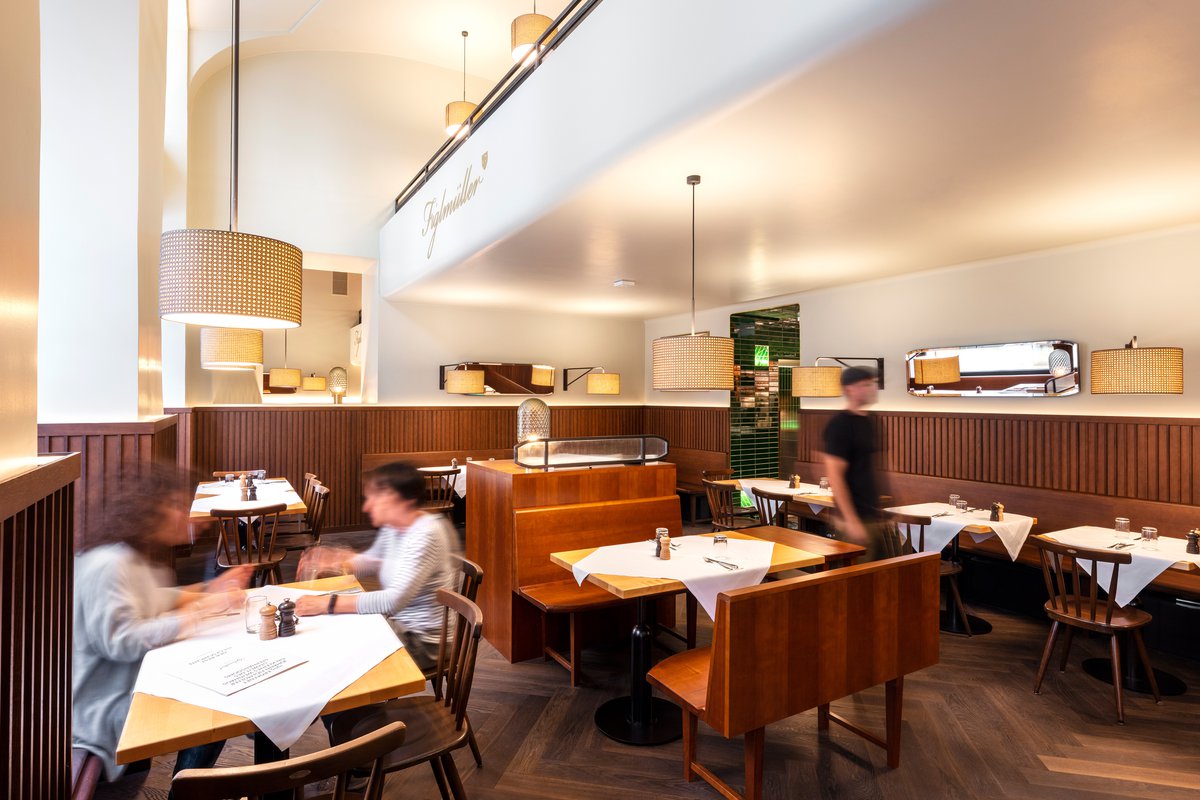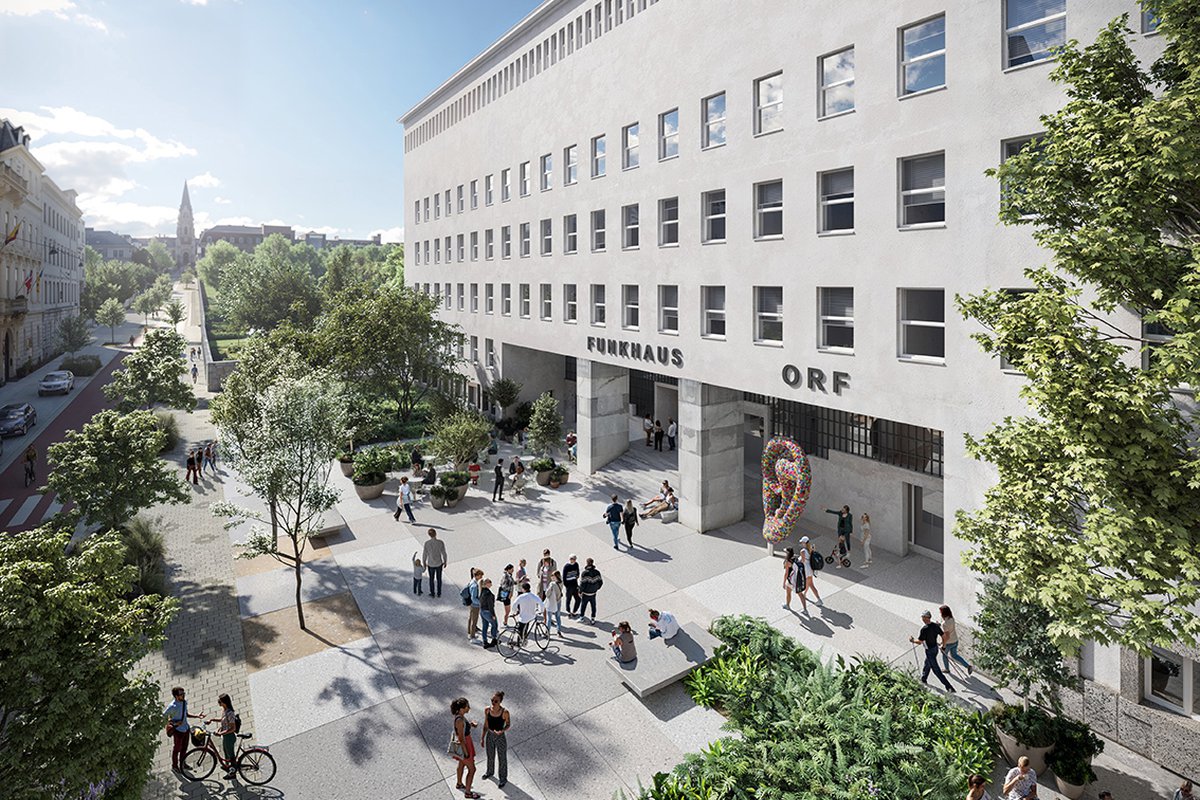Café am Dom
Espresso bar on St. Stephen’s Square.
The Figlmüller Group tasked BWM with giving their pop-up café on St. Stephen’s Square a complete makeover. The new Café am Dom brings the tradition of Viennese coffeehouses and espresso bars into the present day. While there’s no mistaking its Viennese roots and Italian influences, the colours, shapes and materials give the space a unique character.
In Vienna, coffeehouse (Kaffeehaus) culture and interior design are inextricably linked. This connection is even more pronounced in the case of the espresso bars that emerged in the 1950s and offered a modern take on the traditional Viennese coffeehouse. While the classic coffeehouse was designed as a kind of extended living room, encouraging guests to linger, the espresso bar was its stylish, fast-paced companion: a unique blend of small Viennese cafés and Italian-inspired daytime bars. Urban and international in feel, yet unmistakeably Viennese.
Like the traditional coffeehouses, the interiors of espresso bars have often served as testing grounds for new design ideas and have pioneered bold and unique atmospheres. These compact yet versatile spaces adapt effortlessly to different times of day and moods, whether it’s breakfast, a quick espresso break, a light lunch, afternoon aperitivo, or sundowner after work.
Viennese roots & Italian influences.
The new Café am Dom carries the tradition of Viennese coffeehouses and espresso bars into the present, but it does so without rehashing, imitating or copying old formulas. While there’s no mistaking its Viennese roots and Italian influences, the colours, shapes and materials used redefine the genre entirely. The result is surprisingly different, yet familiar. It is not a bar, not a traditional coffeehouse, not a café, not a restaurant – but rather all of these in one. This location, now home to the Café am Dom, has upheld Vienna’s coffee tradition for the better part of a century.
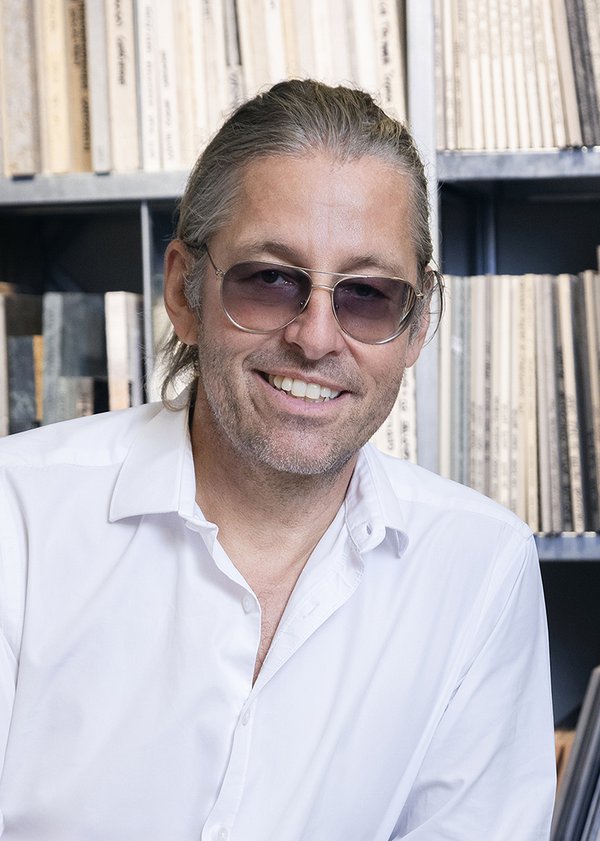
The idea was to take the tradition of Viennese coffeehouses and the espresso bars of the 1950s and ’60s and carry it forward into the future. We wanted to create a sophisticated, metropolitan space that embraces its roots in Viennese coffeehouse culture while incorporating the elegance of the Italian espresso.Erich Bernard
Bold colours, graphic patterns.
The red surfaces – expressed through different materials and textures and a range of varying tones – are the defining feature of the interior. Upon entering the café, the dim lighting may come as a surprise at first, but the glossy finishes catch the light and reflect it far into the space, creating an atmosphere that feels both dark and luminous, both warm and fresh. The extensive mosaic flooring made from natural stone tiles laid out in a diamond pattern evokes the Italian essence of classic espresso bars, while its tri-colour palette is inspired by the roof of the nearby St. Stephen’s Cathedral. The classic wall clock on the rear wall of the café reminds all who see it of this precious break from the daily grind.
From a quick espresso to an extended lunch.
Although the café stretches deep into the building, guests first enter through its narrow front section, which opens up in full width onto St. Stephen’s Square. The dark entrance, featuring a row of orb lights as its identifying feature, stands out by virtue of its timeless restraint in the midst of the overload of advertising in its immediate surroundings. “We were interested in exploring what the future of coffeehouses and espresso bars might look like, beyond nostalgia and romanticisation,” says Erich Bernard. “It was important to us that the Café am Dom be a place for everyone – especially for locals. A conscious departure from the predictable tourist themes of the nearby souvenir shops and an oasis amidst the crowds, it is a place where even the Fiaker drivers still take their standing coffee, as they've done for the past 75 years.”
The entrance area, with its elegant high-set stone tables and banquette seating, is designed for quick, casual meetups. Overhead, an opening in the ceiling displays a three-dimensional map of the city of Vienna as it was around 1910. The long counter, typical of classic Viennese espresso bars, provides a convenient stop for those in a hurry.
The inner-most section of the café, with its continuous banquette seating and cosy booths, is designed for those wanting to stay a bit longer. In this sense, this area is closer in spirit to the traditional Viennese coffeehouse, which transforms into more of a restaurant at certain times of day.
The outdoor seating area gives guests a stunning, front-row view of St. Stephen’s Cathedral in all its splendour – a sight that even locals never grow tired of.
Task
Interior Design/ Refurbishment für Lokal direkt am Wiener Stephansplatz
Date
04/2025
Client
Figlmüller GmbH
BWM Team
Erich Bernard, Pia Temt, Eleni Nagl, Livia Hämmerle, Julia Neuner, Carolina Christoffer
Image credit
Photos: Lukas Lorenz
Rendering: BWM Designers & Architects
Participants
Colour design
Monika Heiss
Light design
Christian Ploderer
